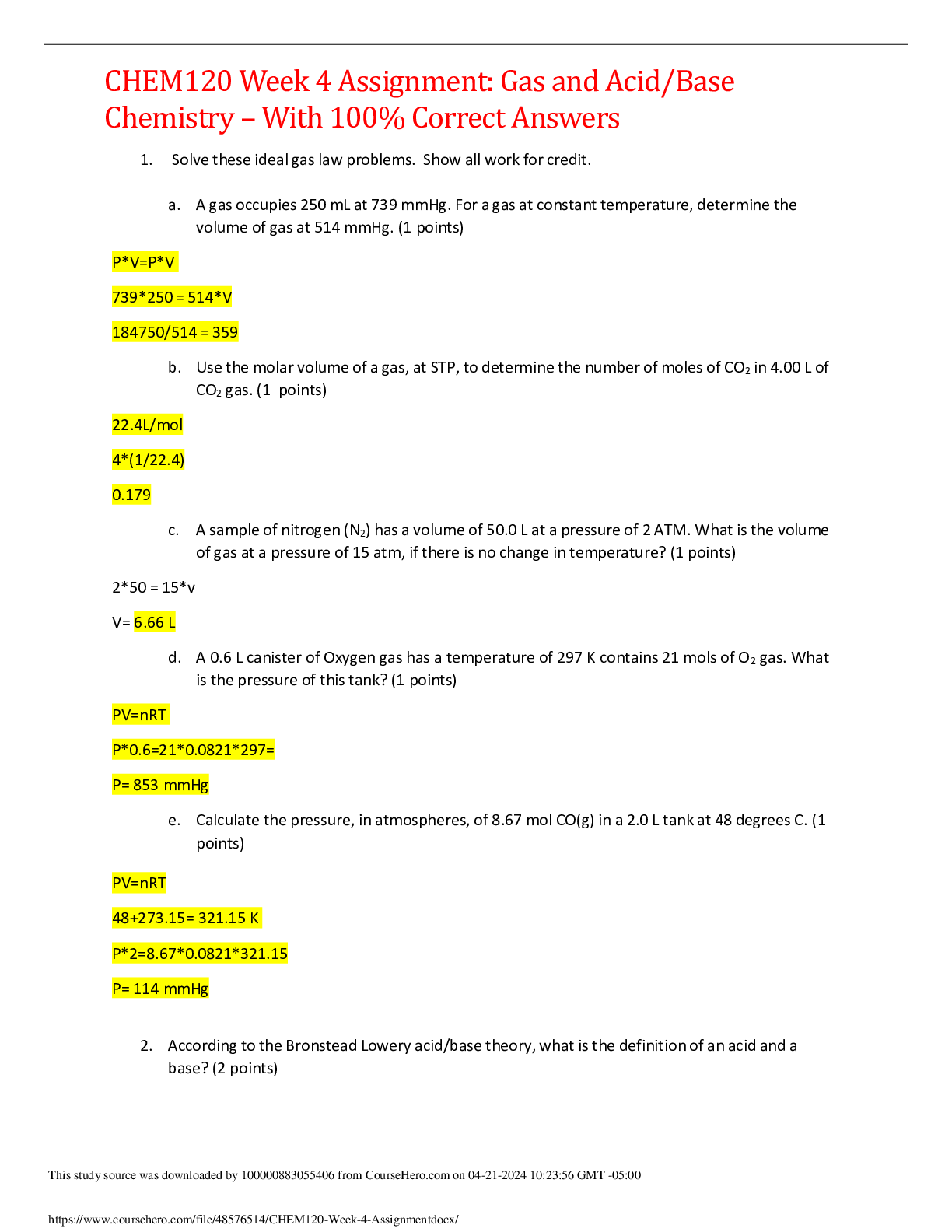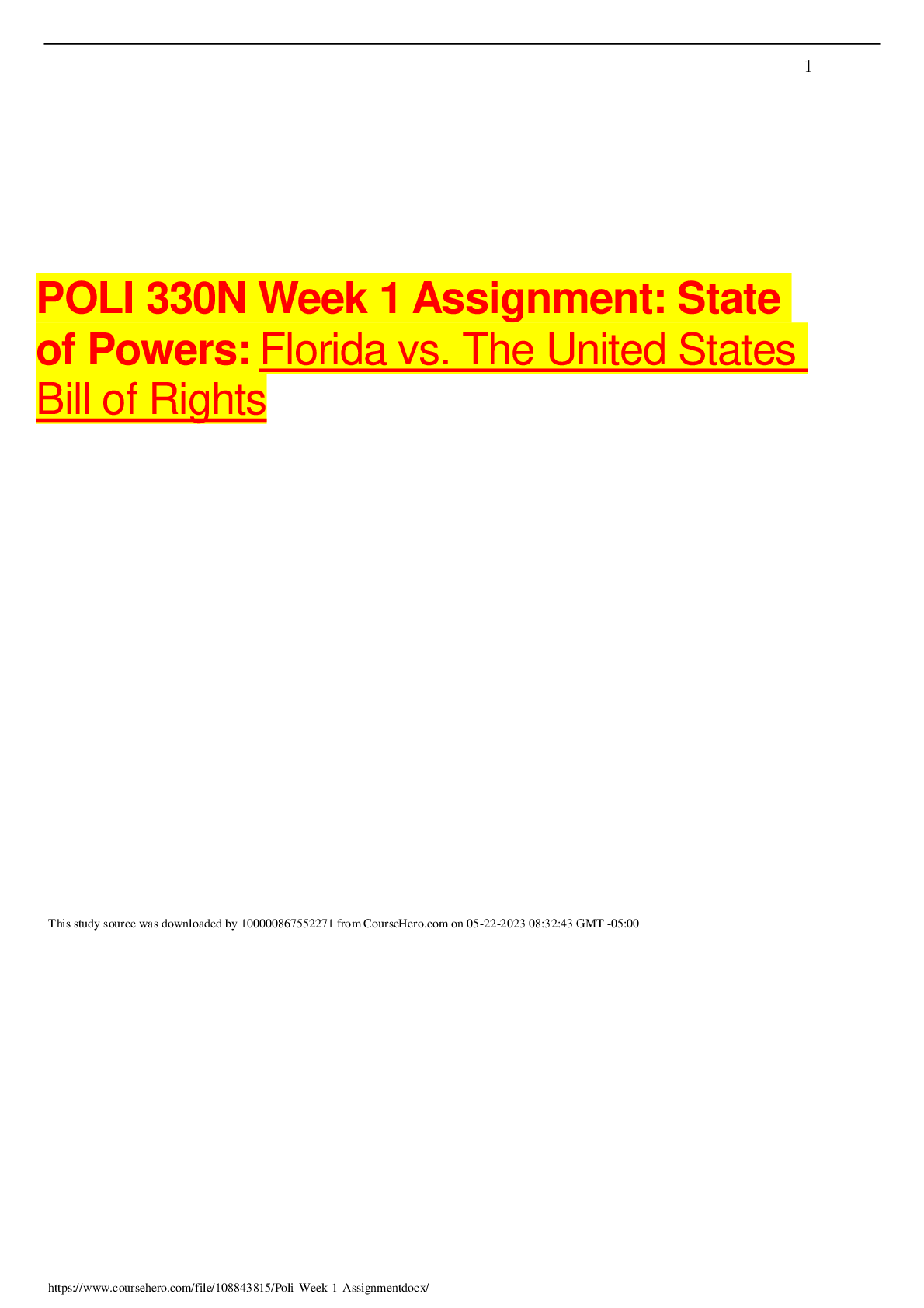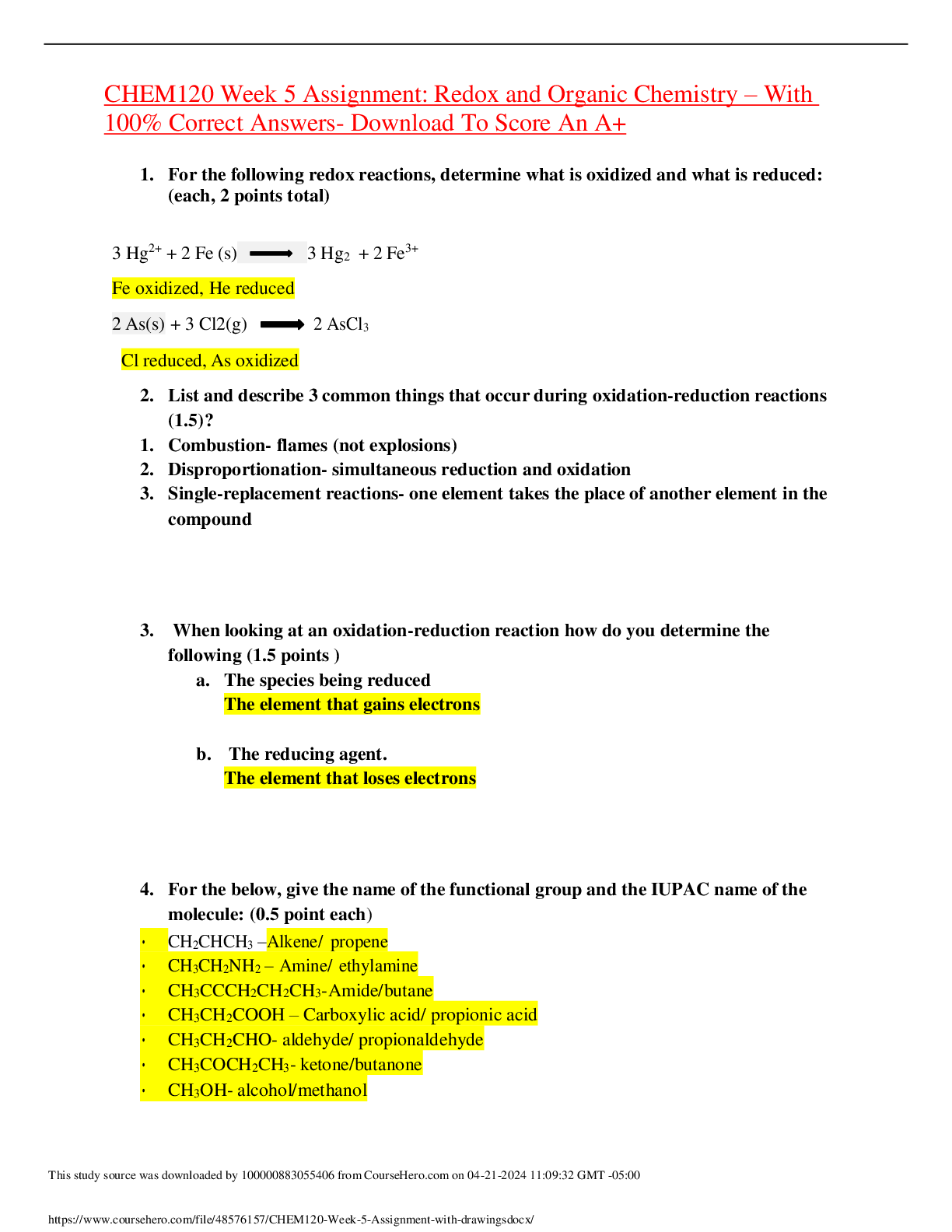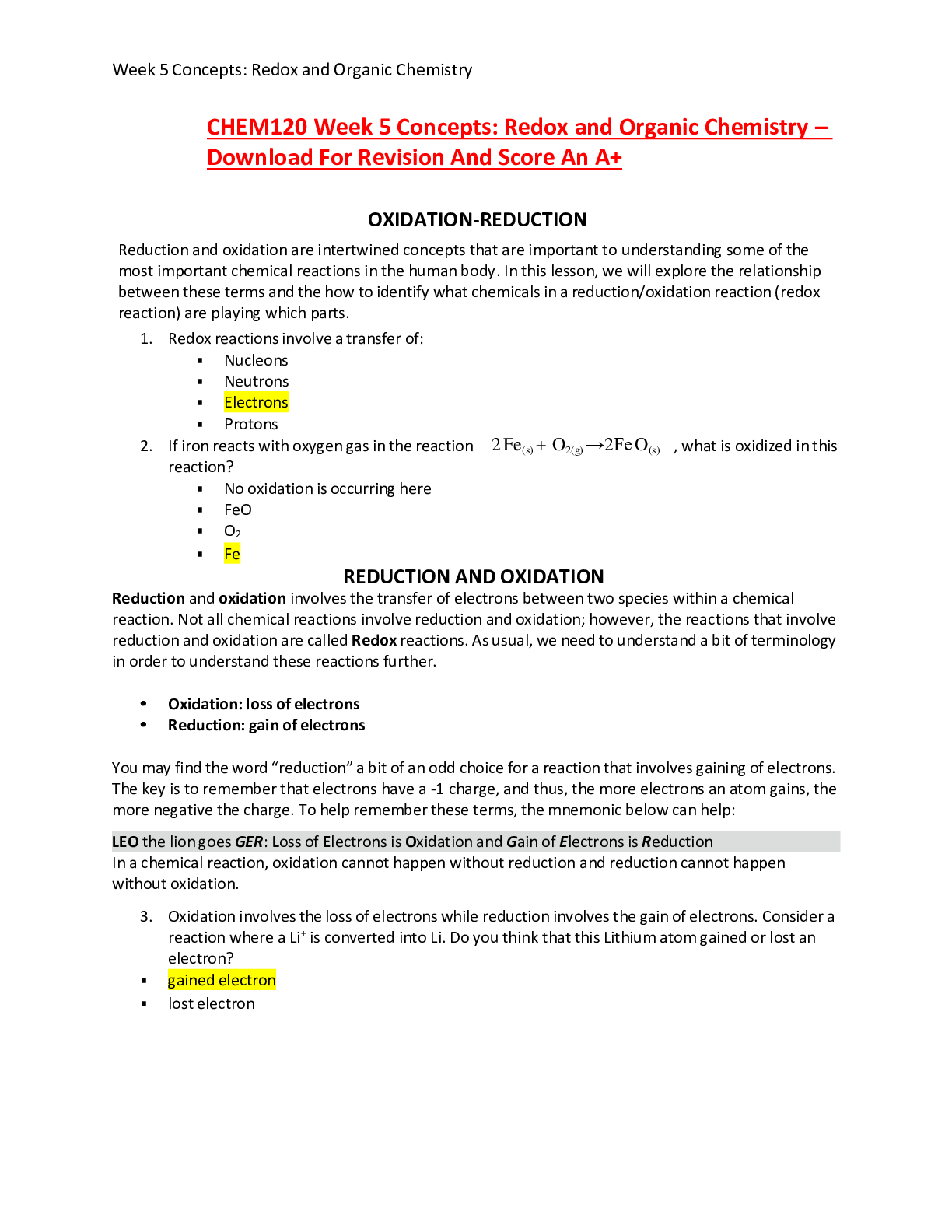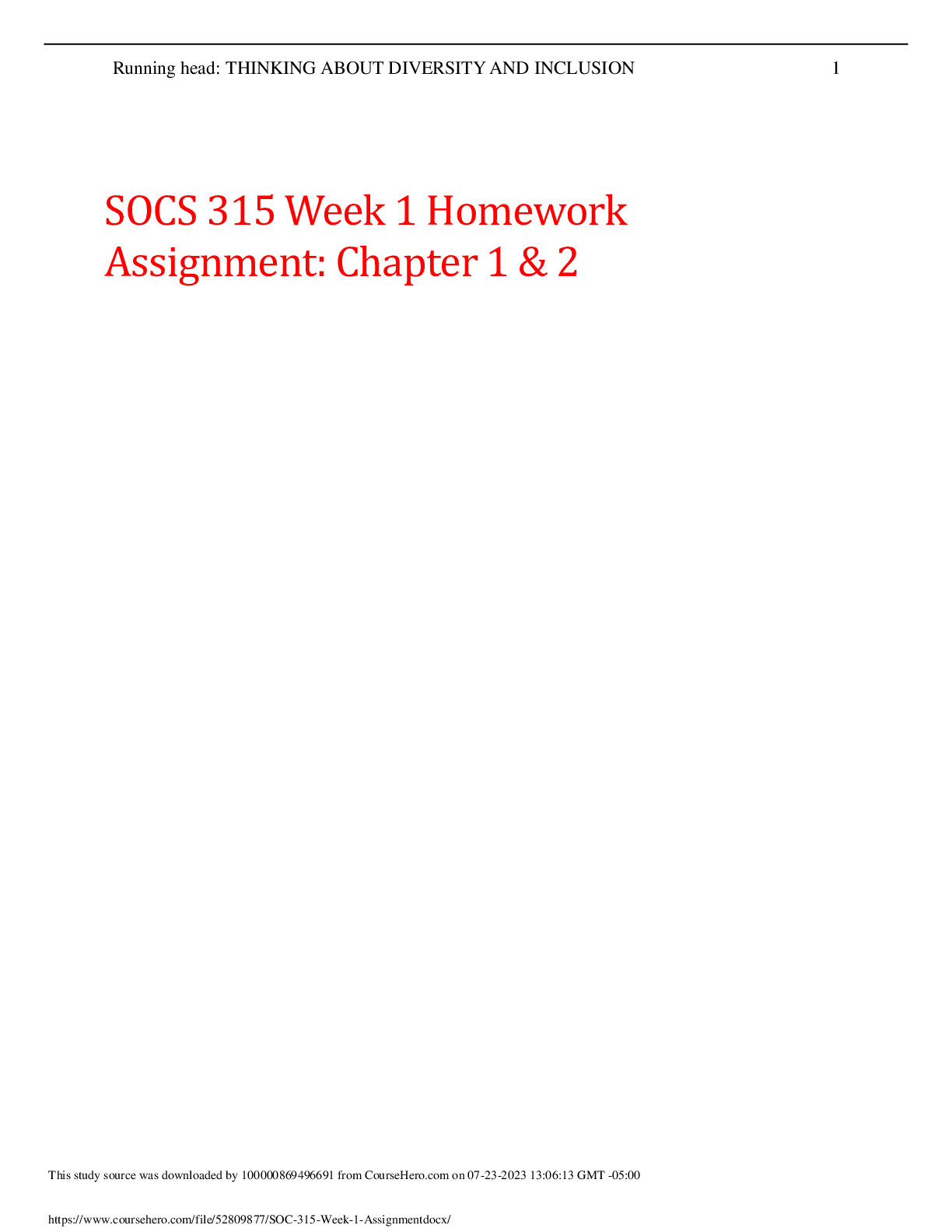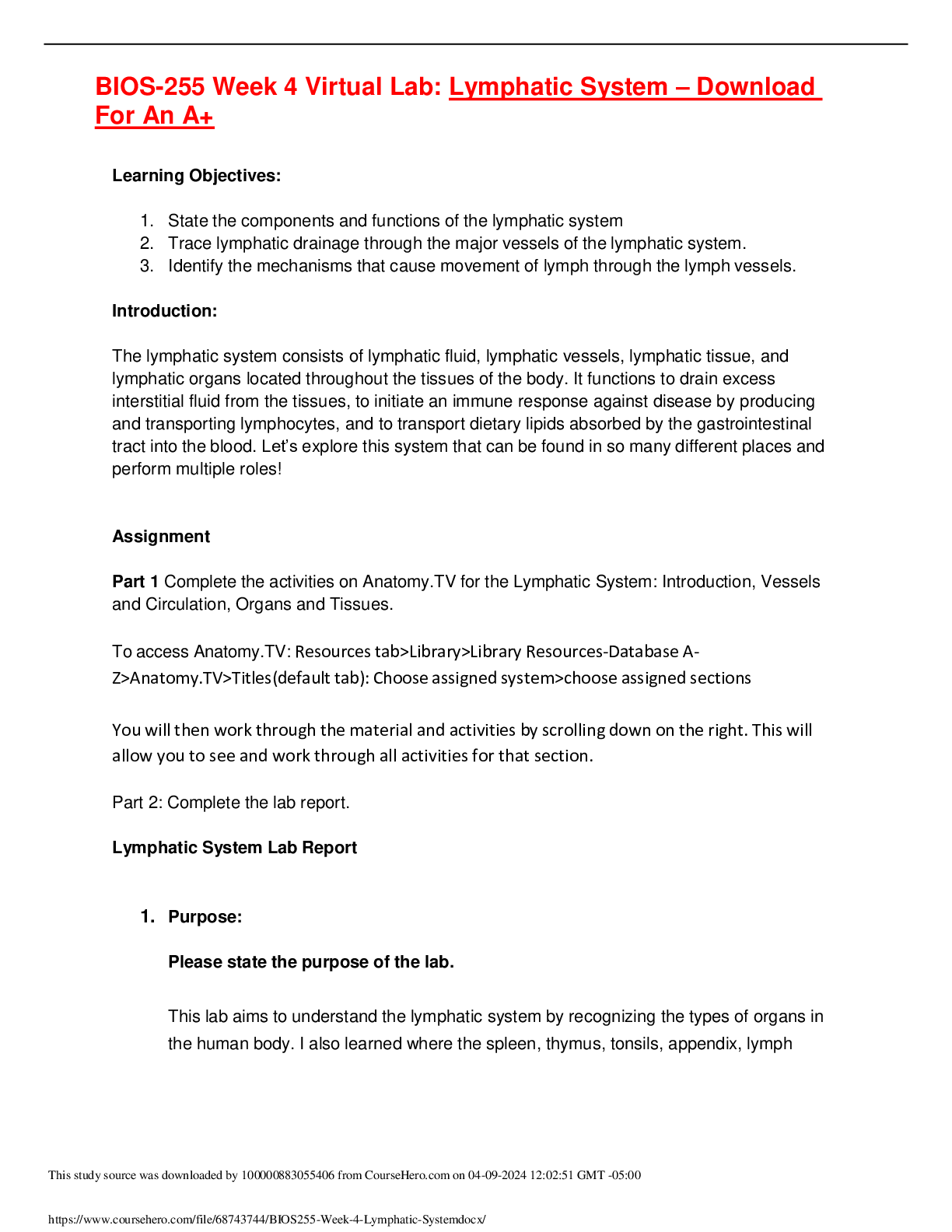AMERICAN HISTORY > ASSIGNMENT > HIST-405N Week 3 Case Study Assignment Option 2: The Indian Removal Act of 1830 – Download for an (All)
HIST-405N Week 3 Case Study Assignment Option 2: The Indian Removal Act of 1830 – Download for an A+ Grade
Document Content and Description Below
HIST-405N Week 3 Case Study Assignment Option 2: The Indian Removal Act of 1830 – Download for an A+ Grade The beginning of 1830, Native Americans occupied the lands in the southern regions pr... eviously owned by their ancestors. There were five Indian tribes established in the areas known as the Cherokee, Creek, Choctaw, Chickasaw, and Seminole nations. Settlers viewed the Indians as being in their way of advancement needed to expand the land of the United States, which the white settlers believe they deserved. President Andrew Jackson exhibited the popular opinion of the “majority of Americans believed Indians had no place in the white republic” (OpenStax, 2019). President Jackson, previously a general under President Monroe in 1814, led the United States military armies in defeating a portion of Creek nation. The Creek nation surrendered twenty-two million acres of land in southern Georgia and central Alabama. In 1818, Jackson led another war against the Indians. Slaves were escaping white plantation owners and found a safe haven with the Seminole tribe in Florida causing the First Seminole War. As President he continued his crusade in 1830, Jackson authorized the Indian Removal Act, which “could grant land west of the Mississippi River to Indian tribes that agreed to give up their homelands” (Office of History, n.d.). Jackson had a profound racial animosity. He cleverly utilized his power to get rid of the Indians from the United States for the progression of white civilization. The Act was inspired by the Manifest Destiny. The Manifest Destiny was ideology that the United States is intended to expand westward across the land between the Pacific to the Atlantic Ocean. The Indian Removal Act allowed “Jackson and his followers to persuade, bribe, and threaten tribes into signing removal treaties and leaving the Southeast” (Office of the Historian, n.d.). There were several removal treaties signed with Indians surrendering their territory to relocate west of the Mississippi River. Two tribes accepted the relocation peacefully under the Indian Removal Act whereas other tribes fought against the relocation. The Cherokee took their case to Supreme Court in the lawsuit of Cherokee Nation v. Georgia. “The Cherokee Nation sought an injunction from the Supreme Court to prevent the state of Georgia from enforcing a series of laws stripping the Cherokee people of their rights and displacing them from their land, asserting that the laws violated treaties the Cherokees had negotiated with the United States” (Federal Judicial Center, n.d.). Unfortunately, the case did not meet the standards for them to be considered as a foreign nation. An additional case followed the Cherokee Nation v. Georgia known as the Worcester v. Georgia. In the case of Worcester v. Georgia, Chief Justice Marshall indicated “that the state of Georgia had no authority over the Cherokee, which as a sovereign nation could only be subject to the authority of the federal government” (Khan Academy, n.d.). However, President Jackson did not enforce the verdict since he considered the Indian Removal Act was in their best interest. He stated that Indians were like children requiring guidance. Therefore, the relocation of the Indian tribes continued. Cherokee Nation became split about the decision to relocate. Some wanted to fight for their ancestors’ land. While others thought it was more sensible to agree to the relocation in exchange for profit and additional benefits. “In 1835, a few self-appointed representatives of the Cherokee nation negotiated the Treaty of New Echota, which traded all Cherokee land east of the Mississippi for five million dollars, relocation assistance and compensation for lost property” (History, 2020). The select few representatives were not recognized leaders of the Cherokee Nation, which made them feel betrayed. The government saw no injustice in the agreement. “The Cherokee were given two years to migrate voluntarily, at the end of which time they would be forcibly removed” (PBS, n.d.). The government forced the Cherokees into migration, known as the Trail of Tears, which was a devasting time for the Indians. “They were not allowed time to gather their belongings, and as they left, whites looted their homes” (PBS, n.d.). There were over four thousand Cherokee fatalities on the journey to Oklahoma due to harsh conditions of weather, starvation, and diseases. In conclusion, the Indian Removal Act was successful in the purpose of moving the Indian tribes off of their territory to Oklahoma. President Jackson was in favor of the removal since he had a strong dislike for people of color. He thought whites were superior and the almighty race from God. He played a stronger role in the beginning of forcing the tribes to migrate west of the Mississippi River. After the supreme court case Worcester v. Georgia, Jackson made clear he was not going to enforce the ruling of Chief Justice Marshall and the Indians had no protection under the state law. Ultimately this led to the Trial of Tears, which was a forced removal of the Indian tribes in a harsh manner. References Federal Judicial Center. (n.d.). Cherokee Nation v. Georgia. Retrieved from https://www.fjc.gov/history/timeline/cherokee-nation-v-georgia History. (2020). Trial of Tears. Retrieved from https://www.history.com/topics/native-american- history/trail-of-tears Khan Academy. (n.d.). Indian Removal. Retrieved from https://www.khanacademy.org/humanities/us-history/the-early-republic/age-of- jackson/a/indian-removal Office of the Historian. (n.d.). Indian Treaties and the Removal Act of 1830. Retrieved from https://history.state.gov/milestones/1830-1860/indian-treaties OpenStax. (2019). U.S. history. OpenStax CNX. Retrieved from https://cnx.org/contents/p7ovuIkl@6.18:gMXC1GEM@7/Introduction PBS. (n.d.). Indian Removal. Retrieved from https://www.pbs.org/wgbh/aia/part4/4p2959.html [Show More]
Last updated: 11 months ago
Preview 3 out of 5 pages

Loading document previews ...
Buy this document to get the full access instantly
Instant Download Access after purchase
Buy NowInstant download
We Accept:

Reviews( 0 )
$11.00
Can't find what you want? Try our AI powered Search
Document information
Connected school, study & course
About the document
Uploaded On
Jun 26, 2024
Number of pages
5
Written in
Additional information
This document has been written for:
Uploaded
Jun 26, 2024
Downloads
0
Views
97

